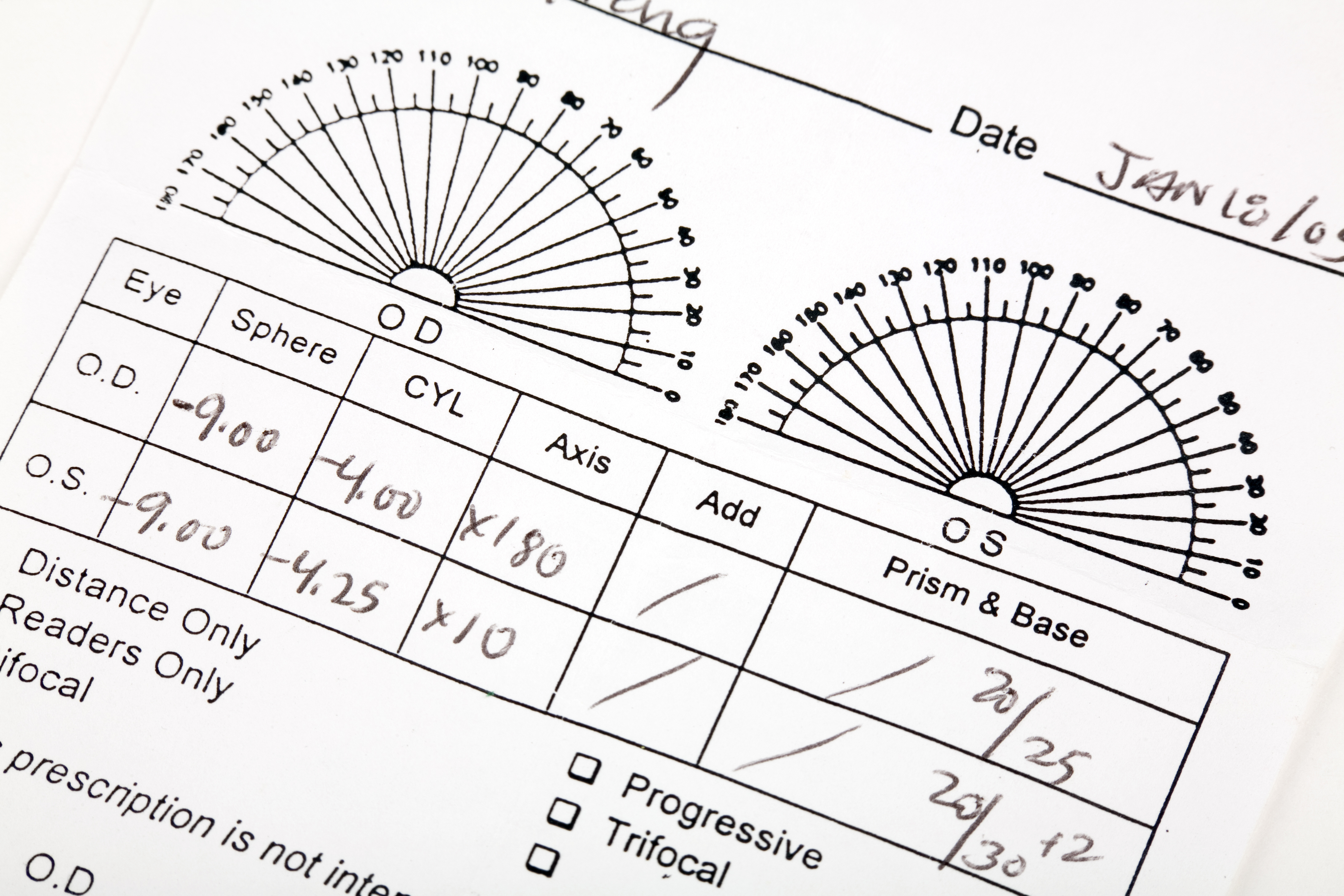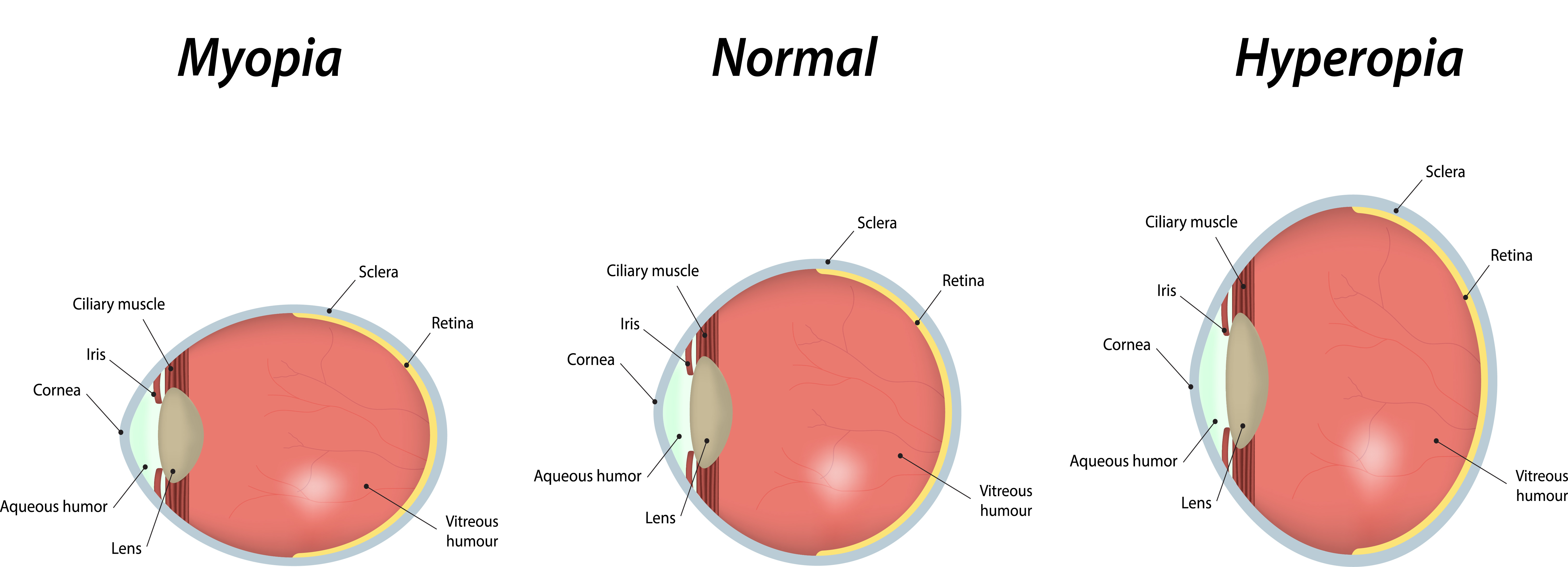Updated on September 24, 2024
What is Lens Index and and Why is It Important?


Vision Center is funded by our readers. We may earn commissions if you purchase something via one of our links.
What is Lens Index?
The lens index refers to the index of refraction (otherwise known as refractive index) of lens material for eyewear. It is a relative measurement number that describes how efficiently the material bends light. Light refraction will depend on how quick light itself passes through the lens.
In other words, the refractive index is the ratio of the speed of light in a vacuum divided by the speed of light in the lens material.
A higher index means that light travels more slowly through the lens material and more bending of light rays occurs. Because of this, some glass lenses do not require as much lens material as would glass lenses with a lower index.
Prescription glasses with a higher lens index will have thinner lenses. However, prescription glasses with a lower lens index will have thicker lenses.
The refractive index of prescription lenses extends from 1.5 standard index to 1.74 high index. High-index materials offer ultra-thin, lighter lenses, unlike standard-index materials, which makes up thicker lenses.
Where to Buy Glasses + Contacts
Best Overall: Warby Parker
Fastest Delivery: EyeBuyDirect
Also Great: Liingo
Best Place to Buy Contacts: Discount Contacts
Do I Need High Index Lenses?
It is always best to speak with an optician to determine whether you need high-index lenses for your prescription.
Individuals with a relatively strong prescription may find high-index lenses ideal for vision correction. Other additional reasons that may influence the need for high-index lenses include:
- Lightness
- Style
- Possibility with semi-rimless or rimless frames
- Reduction of the “coke bottle” effect caused by thicker lenses
However, individuals whose daily life includes strenuous labor or contact sports may find that other, more durable lenses are better suited.
What Lens Index Is Best For You?
It is best to speak with your eye doctor first to determine the best lens index. They can assess your case and provide you with a prescription that is suitable for your needs.
While high-index lenses are popular nowadays, specific refractive errors or daily lifestyle habits may make another lens index a better option.
Undergoing an eye examination will be the first step to correcting your vision and improving your overall eye health.
What is the Difference Between 1.57 and 1.61 Index Lenses?
The main difference between 1.57 and 1.61 index lenses is the thickness of the lens material. An individual’s prescription lens power may also influence which type of lens to use for eyewear.

For example, if the lens power is approximately -2.00, it may be more suitable to opt for 1.56 index lenses. The thickness is around 3mm. If the lens power is approximately -4.00, it may be more suited to opt for 1.61 index lenses. The thickness is around 3mm to 4mm.
Summary
An optician is the best person who will help you determine the right lens index depending on your needs. You will first need to undergo a thorough eye exam so you get the correct prescription according to the results of your exam.
Types of Lens Materials
1.5 Standard Index
Individuals with a weak prescription who want to save money on lenses may opt for a 1.5 standard index lens. This type of lens is suitable for prescriptions with an SPH correction of +/- 2.25 and less, or a CYL correction of +/- 1.50 and less.
1.56 Mid-Index
The difference between 1.56 mid-index and 1.50 standard lenses is thinness. Lenses with this index reduce lens thickness by 15 percent. Full-rim eyewear frames and glasses worn during sports activities are most suitable for this lens index.
1.57 Thin & Light Index
Individuals with a somewhat stronger eye prescription may be interested in this type of lens. 1.57 thin & light index lenses are thinner and more durable. Prescriptions for these lenses include an SPH correction between +/- 5.00 and +/- 4.00, and a CYL correction of +/- 3.00 and less.
1.59 Polycarbonate
Polycarbonate lenses offer complete UV protection. The unique polycarbonate material makes lenses stronger and impact-resistant.
With these lenses, individuals can choose lens coatings, such as scratch-resistant or anti-reflective coating, to make up for any possible color differences or add further protection.
1.61 High Index
For those looking for a more modern look, 1.61 high-index lenses may just fit the bill. These ultra-thin lenses are suitable for relatively thin eyewear frames or prescriptions that have an SPH correction between +/- 4.25 and +/- 6.75, and a CYL correction between +/- 2.25 and +/- 3.00.
1.67 High Index
1.67 high-index lenses surpass in thinness and lightness when compared to 1.61 high-index lenses. It helps with eye distortion caused by stronger prescriptions and is ideal for individuals with an SPH correction between +/- 7.00 and +/- 9.00, and a CYL correction between +/- 3.25 and +/- 4.00.
1.74 High Index
Prescriptions in need of the highest lens power may find favor with this type of lens. 1.74 high-index lenses are suitable for individuals with a prescription of an SPH correction of +/- 9.25 and more, and a CYL correction between +/- 4.25 and +/- 6.00.
Summary
There are various types of lens materials and they're used depending on the degree of correction needed. These include 1.56 Standard Index, 1.57 Mid-index, 1.59 Thin & Light Index, 1.59 Polycarbonate, 1.61 High Index, 1.67 High Index, and 1.74 High Index.
Refractive Errors
When individuals have trouble with vision, such as farsightedness (hyperopia) or nearsightedness (myopia), an optometrist may prescribe eyeglass lenses to correct refractive errors. Your visual acuity improves when eyeglass prescriptions provide the necessary lens power (the degree of light-bending ability).

If some refractive errors are more severe, individuals will have to use higher prescriptions. These stronger prescriptions may consist of thick and heavy plastic lenses.
However, the introduction of high-index plastic materials has changed the landscape of eyewear. Some individuals can now correct refractive errors with thinner lenses (due to less material) without compromising efficacy. At the same time, wearers of high-index lenses can sport stylish, semi-rimless, or rimless frames.
Summary
Lens index is the refractive index of an eyewear's lens material. This is used to correct refractive errors such as myopia (nearsightedness) and hyperopia (farsightedness).
In this article
2 sources cited
Updated on September 24, 2024
Updated on September 24, 2024
About Our Contributors
Anthony Armenta, a graduate in International Relations from the University of California, Irvine, has dedicated the past 5 years to freelance health content writing and medical editing in Barcelona. Working with public hospitals, he covers various medical specialties, including infectious diseases and pneumology. Anthony's commitment to creating fact-driven, health-related content is driven by his belief in the power of information to empower individuals to improve their health, including in areas like vision care.
Dr. Melody Huang is an optometrist and freelance health writer with a passion for educating people about eye health. With her unique blend of clinical expertise and writing skills, Dr. Huang seeks to guide individuals towards healthier and happier lives. Her interests extend to Eastern medicine and integrative healthcare approaches. Outside of work, she enjoys exploring new skincare products, experimenting with food recipes, and spending time with her adopted cats.






